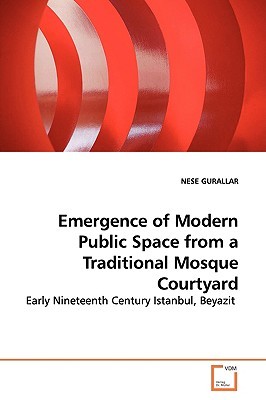
- We will send in 10–14 business days.
- Author: Nese Gurallar
- Publisher: VDM Verlag
- Year: 2009
- Pages: 256
- ISBN-10: 3639136012
- ISBN-13: 9783639136012
- Format: 15.2 x 22.9 x 1.5 cm, softcover
- Language: English
- SAVE -10% with code: EXTRA
Emergence of Modern Public Space from a Traditional Mosque Courtyard (e-book) (used book) | bookbook.eu
Reviews
Description
This book aims to produce a comprehensive history of the transformation of the Istanbul Beyazit Meydani [Square] related with the modernisation of the public realm in the Ottoman Empire. In opposition to the dominant view that the reshaping of urban spaces in Istanbul dates to the second half of the 19th century, this research argues that in fact, the transformation process began in the early 19th century. By the abolishment of the Janissary Corps in 1826, Sultan Mahmud II eradicated the signs of the Janissaries from the capital. The process of transformation of Beyazit Meydani, into Seraskerlik Meydani (the square of new army's headquarter) constitutes a unique case reflecting this long power struggle. This was realised at the expense of the exterior courtyard of the Beyazit Mosque, which constitutes a significant part of Ottoman mosque. The gradual demolition of the exterior courtyard signifies a conversion of the courtyard of the mosque to a square. This spatial transformation went hand in hand with the political and social changes. The development of the modern urban landscape was parallel to the emerging modern public life.
EXTRA 10 % discount with code: EXTRA
The promotion ends in 16d.19:32:29
The discount code is valid when purchasing from 10 €. Discounts do not stack.
- Author: Nese Gurallar
- Publisher: VDM Verlag
- Year: 2009
- Pages: 256
- ISBN-10: 3639136012
- ISBN-13: 9783639136012
- Format: 15.2 x 22.9 x 1.5 cm, softcover
- Language: English English
This book aims to produce a comprehensive history of the transformation of the Istanbul Beyazit Meydani [Square] related with the modernisation of the public realm in the Ottoman Empire. In opposition to the dominant view that the reshaping of urban spaces in Istanbul dates to the second half of the 19th century, this research argues that in fact, the transformation process began in the early 19th century. By the abolishment of the Janissary Corps in 1826, Sultan Mahmud II eradicated the signs of the Janissaries from the capital. The process of transformation of Beyazit Meydani, into Seraskerlik Meydani (the square of new army's headquarter) constitutes a unique case reflecting this long power struggle. This was realised at the expense of the exterior courtyard of the Beyazit Mosque, which constitutes a significant part of Ottoman mosque. The gradual demolition of the exterior courtyard signifies a conversion of the courtyard of the mosque to a square. This spatial transformation went hand in hand with the political and social changes. The development of the modern urban landscape was parallel to the emerging modern public life.


Reviews